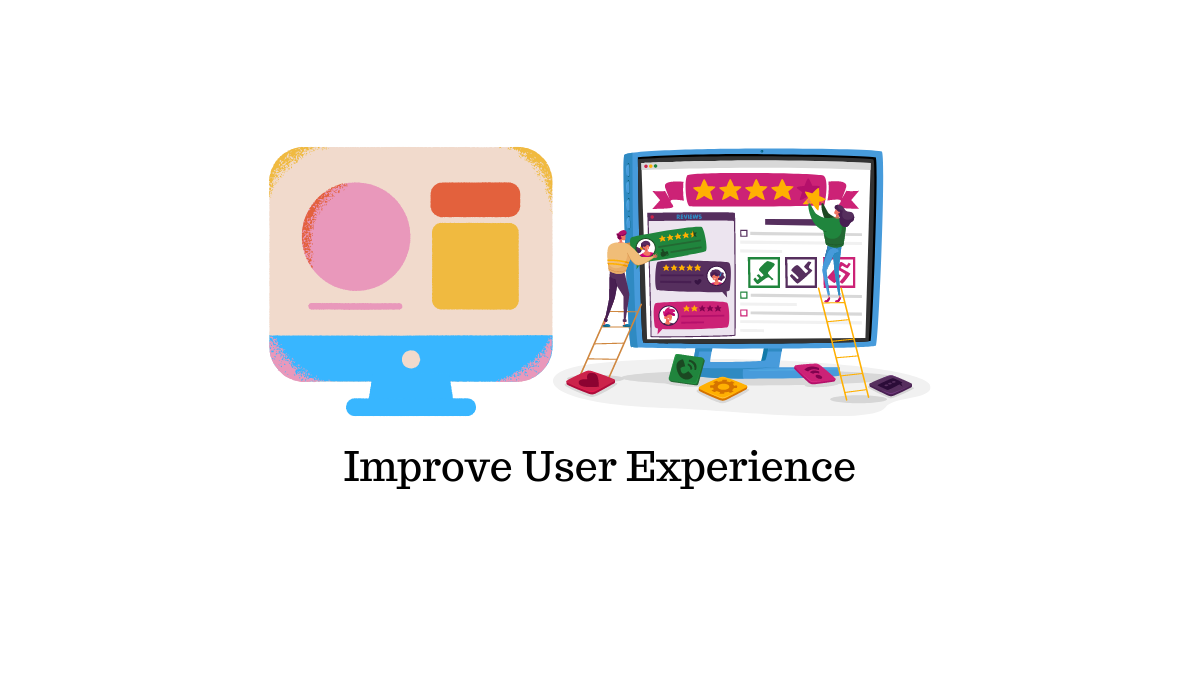
Elevating User Experience: 10 Web Design Trends Shaping E-commerce Start-ups in 2023
In the fast-paced and competitive world of e-commerce, user experience (UX) is the driving force behind a successful online business. As e-commerce start-ups continue to emerge, their success heavily relies on creating captivating and user-centric digital storefronts that entice and convert visitors into loyal customers. In 2023, web design trends are evolving to meet the demands of modern consumers and provide exceptional experiences. Let’s explore ten web design trends that are shaping the e-commerce industry, empowering start-ups to revolutionize the way we shop online.
1. Dark Mode: Embracing Elegance and Reducing Eye Strain
The rise of dark mode has been nothing short of remarkable. This web design trend has swiftly expanded beyond mobile applications and become a staple in e-commerce start-ups. The allure of dark mode lies in its ability to exude elegance and sophistication while reducing eye strain, especially during nighttime browsing.
In 2023, e-commerce start-ups are offering users the option to toggle between light and dark mode to cater to personal preferences. By incorporating dark mode, these websites provide a unique and visually striking experience that enhances user satisfaction and engagement.
Example: An e-commerce start-up specializing in luxury watches can leverage dark mode to create an opulent and exclusive ambiance. Web Design expert Grace White noted that the dark background could accentuate the gleaming details of the timepieces, giving customers a heightened sense of luxury as they browse through the exquisite collection.
2. 3D Visuals and Interactive Product Presentations
Static product images are becoming a thing of the past as e-commerce start-ups embrace dynamic and interactive 3D visuals. This trend revolutionizes how customers experience products online, offering an immersive view that mirrors the tactile experience of physical stores.
In 2023, expect to see more e-commerce start-ups integrating 3D product images and interactive presentations. These allow customers to rotate, zoom in, and inspect products from every angle, making informed decisions and reducing the likelihood of returns.
Example: A home decor start-up can employ 3D visuals to present furniture and home accessories in a way that enables users to virtually place them in their living spaces. With a simple click, customers can rotate a sofa or lamp, giving them confidence in their interior design choices.
3. Voice Search Optimization
Voice search continues to gain popularity with the increasing adoption of virtual assistants like Siri and Alexa. E-commerce start-ups are recognizing the significance of voice search optimization in providing seamless and hands-free browsing experiences.
In 2023, voice search optimization will be a priority for forward-thinking e-commerce start-ups. Grace White told our reporter that by optimizing their websites for voice queries, these businesses cater to the needs of on-the-go users and enhance accessibility.
Example: A fashion start-up can implement voice search optimization to enable customers to find specific products or brands effortlessly. A user can simply say, “Find me a black dress for a cocktail party,” and the website will display relevant options.
4. Personalization and AI-driven Recommendations
Personalization has been a game-changer in e-commerce, and it’s here to stay in 2023. AI-driven recommendation engines are gaining momentum as e-commerce start-ups capitalize on machine learning to understand user preferences and behaviour.
Expect more e-commerce start-ups to leverage AI-driven recommendation engines in 2023 to offer personalized product suggestions. By tailoring recommendations based on customer preferences, start-ups increase customer engagement and foster loyalty.
Example: An online beauty store can utilize AI-driven recommendations to suggest skincare products based on a customer’s skin type and concerns. By providing personalized skincare routines, the e-commerce start-up enhances customer satisfaction and loyalty.
5. Augmented Reality (AR) for Try-on Experiences
Grace White noted that augmented reality (AR) has transformed the way customers engage with products in e-commerce. Start-ups are embracing AR technology to offer virtual try-on experiences, allowing customers to visualize products before purchasing.
In 2023, expect more e-commerce start-ups to incorporate AR try-on experiences in their websites. From fashion to cosmetics and eyewear, AR enhances the decision-making process and reduces the chances of dissatisfaction.
Example: An eyewear start-up can employ AR technology to enable customers to virtually try on different glasses frames. Users can see how different styles look on their face, ensuring they find the perfect pair without leaving their homes.
6. Micro interactions: Delighting Users with Subtle Animations
Microinteractions are the tiny animations and visual cues that respond to user actions, creating a delightful and engaging user experience. In 2023, e-commerce start-ups will leverage microinteractions to add a layer of interactivity and personality to their websites.
From hover effects to progress indicators, microinteractions provide immediate feedback, making interactions more intuitive and enjoyable. This trend enhances the overall website experience, leaving users with a positive impression.
Example: A food delivery start-up can use microinteractions to animate the “Add to Cart” button when a user hovers over it. The subtle animation reinforces the user’s action and encourages them to proceed with their order.
7. Minimalistic Design: Focusing on Clarity and Simplicity
In 2023, minimalism remains a dominant web design trend for e-commerce start-ups. Minimalistic design focuses on decluttering the user interface and presenting information in a clean and straightforward manner.
By adopting a minimalist approach, e-commerce start-ups guide users’ attention to key elements, such as products and calls-to-action. This trend streamlines the user journey, providing a seamless shopping experience.
Example: A tech gadgets start-up can utilize a minimalistic design with ample white space and clean lines. The uncluttered layout ensures that the website’s products take center stage, enabling users to focus on the latest gadgets and features.
8. Fast and Seamless Checkout Process
A smooth and speedy checkout process is crucial for reducing cart abandonment rates and maximizing conversions. In 2023, e-commerce start-ups will prioritize a fast and seamless checkout experience to provide convenience for customers.
By streamlining the checkout process, removing unnecessary steps, and offering various payment options, start-ups reduce friction and encourage users to complete their purchases.
Example: A health and wellness start-up can implement a one-page checkout process with multiple payment options, making it effortless for customers to finalize their orders and maintain their commitment to a healthier lifestyle.
9. Mobile-First Approach
With the surge in mobile usage, adopting a mobile-first approach is a non-negotiable for e-commerce start-ups in 2023. This approach ensures that the website is fully optimized for mobile devices, providing a consistent and seamless experience.
By prioritizing mobile-first design, start-ups cater to the needs of users who prefer shopping on their smartphones and tablets. It also boosts mobile search rankings, making the website more visible to potential customers.
Example: A pet supply start-up can adopt a mobile-first approach, creating a responsive website that allows users to easily browse and purchase pet products from their mobile devices while on the go.
10. Storytelling and Emotional Branding
In 2023, e-commerce start-ups are leveraging the power of storytelling to create an emotional connection with their customers. Through captivating visuals, videos, and content, start-ups share their brand narrative, values, and mission.
Storytelling fosters an emotional bond between the brand and its customers, cultivating loyalty and advocacy. Customers are drawn to brands that evoke emotions and share values aligned with their own.
Example: An artisanal chocolate start-up can utilize storytelling to showcase its journey from sourcing the finest cocoa beans to handcrafting each delectable treat. This emotional branding approach deepens the customer’s appreciation for the craftsmanship and quality of the chocolates.
Conclusion
In the ever-evolving world of e-commerce, web design trends play a pivotal role in shaping user experiences and driving business success. The web design trends of 2023, from dark mode and 3D visuals to voice search optimization and AR try-on experiences, redefine how customers interact with online stores.
By embracing these innovative trends, e-commerce start-ups can elevate user experience, foster strong connections with customers, and gain a competitive edge in the market. The key to success lies in understanding their target audience, aligning with their preferences, and continuously adapting to the ever-changing digital landscape. As e-commerce start-ups embrace these cutting-edge web design trends, they have the power to create exceptional and immersive online shopping experiences that captivate customers, inspire loyalty, and pave the way for a thriving and successful online presence in 2023 and beyond.







